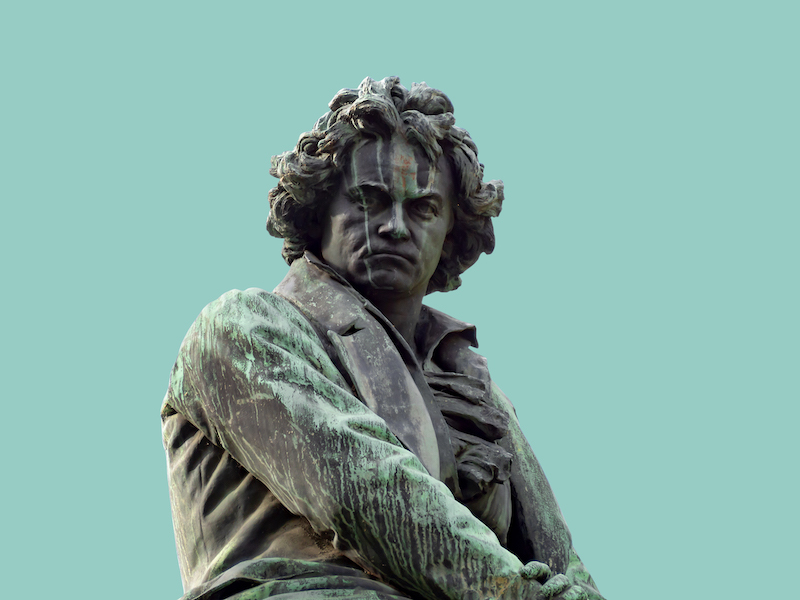With a dramatic opening that might suggest two celebratory fusillades of musket-fire, a funeral march for a slow movement, a scherzo in place of a minuet, and a set of variations for a fourth movement, Beethoven’s Eroica departed significantly from the symphonic conventions of the 18th century. Composed between 1803 and 1804, the Symphony No 3 in E-flat major, Op.55, Eroica, is seen as a transformative turning point not only in the evolution of symphonic form but also in the composer’s own life, and this Adelaide Symphony Orchestra concert charted the origins and nature of the Eroica in revealing detail.

The program for this concert – which was performed as part of the Adelaide Festival – was conceived by acclaimed Australian composer and violist Brett Dean and Cambridge professor of history Sir Christopher Clark, and the plan was for Dean to conduct the ASO’s performances following Clark’s introduction. Unfortunately, at the last moment, Dean was stricken with the coronavirus and conductor Richard Mills hastily stepped in to replace him on the podium; the evening’s performances were preceded by a video greeting by Dean from his Adelaide hospital bed.
Speaking from a lectern on stage and with the aid of projected imagery, Clark outlined the development of the Eroica and in particular the background to a letter Beethoven wrote in October 1802 while being treated in the town of Heiligenstadt for a chronic gastro-intestinal disorder. In this letter to his brothers, since known as the Heiligenstadt Testament, the 31-year-old Beethoven conveys his thoughts of suicide, prompted by his growing deafness, and resolves to continue living so as to fulfil the potential of his musical gift. Showing a diagrammatic representation of the progress of Beethoven’s hearing problems over the course of his life, Clark emphasised that Beethoven’s disability was for him socially isolating and that this was perhaps of more significance to him than its impact on his composing.
Clark then discussed the evolution of Beethoven’s music to highlight the radical originality of the Eroica, illustrating his discussion with excerpts from Beethoven’s earlier works: the Septet in E-flat major, Op. 20, III. Tempo di menuetto; the introduction to the Piano Concerto No. 1 in C major, Op.15, I. Allegro con brio; the Symphony No 1 in C major, Op.21, I. Adagio molto—Allegro con brio; and the Symphony No 2 in D major, Op. 36, IV. Allegro molto, all performed by members of the ASO.
Clark’s illuminating musical analysis paved the way for a performance of Brett Dean’s Testament: Music for orchestra (2008). Dean wrote Testament in response to the Heiligenstandt Testament to convey what it might have been like to develop hearing problems and to consider suicide. Dean’s Testament was originally scored for 12 violas and required each violist to alternate between two bows, one with no rosin to create the kind of light, whispering sound that might be experienced by those with Beethoven’s hearing. Beethoven suffered from severe tinnitus and was increasingly unable to hear high frequencies and to distinguish speech but was aware of the the musical sound of speech and was hypersensitive to very loud sound. This version of Testament, for a wind and string orchestra, is complex and layered, vividly evoking the perception of the distorted sounds of the outside world combining with the ceaseless internal chatter of an emotionally distressed mind.
Following the interval, Clark introduced the ASO’s performance of the Eroica by outlining the politically and socially turbulent times in which Beethoven lived and composed. The era of the French Revolution, the Napoleonic Wars and the collapse of the Habsburg Empire was a period of dramatic change across Europe and this turbulence is clearly reflected in Beethoven’s music. When the score was first published, it bore the designation ‘per festeggiare il souvenire di on grand Uomo’ – to celebrate the memory of a great Man. Beethoven had originally dedicated the Eroica to Napoleon whom he admired for precipitating a new social order and as a champion of freedom and equality. By the time the Eroica was published, Beethoven had become disillusioned with the newly crowned Emperor, leaving us with the question of whether the dedication was intended ironically for Napoleon who was still very much alive, or was intended for Beethoven’s patron, or for himself as the fearless composer defying his disability, or for heroes and heroism generally. The Eroica may be seen as a work of homage, or of resolution prompted by an existential crisis, or of sheer musical inventiveness, or it can be seen as a musical characterisation of politically tumultuous times. Or all of the above.
Under Richard Mills, the ASO gave a fine performance, emphasising the weight and drama to be found in the score and evoking the march of revolution across Europe. This excellent concert eloquently showed how Beethoven’s music is often about much more than music, and the format of the evening is a valuable model for the presentation of great music, one that hopefully will be employed more frequently.











Comments
Log in to join the conversation.